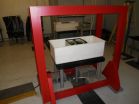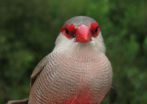(Press-News.org) A team of researchers, led by Scott Oakes, at the University of California, San Francisco, has identified a way to prevent symptom onset, weight loss, and paralysis and extend survival in a mouse model of amyotrophic lateral sclerosis (ALS; also known as Lou Gehrig's disease), providing a new avenue of research for the development of therapeutics for ALS and other motor neuron diseases.
ALS and other motor neuron diseases are neurological disorders that selectively affect nerve cells that control voluntary muscle activities such as speaking, walking, breathing, swallowing, and general movement of the body. A key feature of these diseases is that the affected nerve cells (which are known as motor neurons) die by a process known as apoptosis. Determining whether this death contributes to disease or occurs after the nerves have stopped functioning is important to establishing whether blocking apoptosis would have therapeutic benefit. In the study, genetically eliminating activation of the mitochondrial apoptotic pathway in a mouse model of ALS was shown to preserve motor neuron viability and function, thereby preventing symptom onset, weight loss, and paralysis and extending survival. The authors therefore suggest that inhibiting activation of the mitochondrial apoptotic pathway might provide a way to preserve motor neurons in individuals with ALS and other motor neuron diseases.
INFORMATION:
TITLE: Blocking the mitochondrial apoptotic pathway preserves motor neuron viability and function in a mouse model of amyotrophic lateral sclerosis
AUTHOR CONTACT:
Scott A. Oakes
University of California, San Francisco, San Francisco, California, USA.
Phone: 415.476.1777; Fax: 415.514.3165; E-mail: scott.oakes@ucsf.edu.
View this article at: http://www.jci.org/articles/view/42986?key=b51352dad375af860586
Preserving nerve cells in motor neuron disease
2010-09-20
ELSE PRESS RELEASES FROM THIS DATE:
JCI online early table of contents: Sept. 20, 2010
2010-09-20
EDITOR'S PICK: Preserving nerve cells in motor neuron disease
A team of researchers, led by Scott Oakes, at the University of California, San Francisco, has identified a way to prevent symptom onset, weight loss, and paralysis and extend survival in a mouse model of amyotrophic lateral sclerosis (ALS; also known as Lou Gehrig's disease), providing a new avenue of research for the development of therapeutics for ALS and other motor neuron diseases.
ALS and other motor neuron diseases are neurological disorders that selectively affect nerve cells that control voluntary ...
Lightweight true random number generators a step closer
2010-09-20
The widespread use of true random number generators (TRNGs) has taken a step closer following the creation of the most lightweight designs to date by researchers at Queen's University Belfast's Institute of Electronics, Communications and Information Technology (ECIT).
Members of the Institute's cryptography research team have produced a series of circuits that are up to 50 per cent smaller than anything else currently available. Optimised for digital circuits, FPGA and ASIC, they push efficiency to the limit by using just one logic gate, one look-up table and four transistors ...
Protein may advance Parkinson's by preventing neurons from clearing debris
2010-09-20
A protein linked to Parkinson's disease may cause neurodegeneration by inhibiting autophagy—the process in which cells digest some of their contents—according to a study in the September 20 issue of the Journal of Cell Biology (www.jcb.org).
Autophagy serves to clear a variety of toxic waste from cells, including misfolded proteins and defective mitochondria. These two types of cellular trash accumulate in neurons from Parkinson's patients, suggesting that autophagy could be impaired in these cells. A commonly amassed protein in Parkinson's disease is alpha-synuclein, ...
Magnetic attraction for fish, crabs?
2010-09-20
SEATTLE – Super-sized electromagnetic coils are helping explain how aquatic life might be affected by renewable energy devices being considered for placement along America's coastal waters and in the nation's rivers.
Scientists with the Department of Energy's Pacific Northwest National Laboratory are examining whether a variety of fish and invertebrates change their behavior during and after exposure to an electromagnetic field similar to those produced by marine and hydrokinetic power devices that capture energy from ocean waves, tides, currents and rivers. Research began ...
Female fish abandoned by males to raise offspring on their own
2010-09-20
Caring for children can be a tough job, particularly if you are a female cichlid fish.
Native to the crater lakes of Nicaragua, cichlid fish look after their young by defending them against would-be predators. While male and female cichlid fish generally share parental responsibilities, research shows that this is not always the case.
Conducted by an international team of researchers that included two biologists from Monash University, and published in the journal Behavioral Ecology and Sociobiology, new research has shown that male cichlid fish have a propensity ...
Secrets of birds' sexual signals revealed
2010-09-20
Patterned feathers, previously thought to be used only for camouflage in birds, can play an important role in attracting a mate and fending off rivals, a University of Melbourne study reveals.
Ms Thanh-Lan Gluckman, co-author of the paper and Masters of Philosophy student from the Department of Zoology at the University of Melbourne, Australia, said this finding brought a new perspective to research in animal communication and evolution.
"The implication of this study is that feathers don't need to be bright and showy to be used in sexual signalling and hence this changes ...
Protein behind development of immune system sentinels identified
2010-09-20
A protein called PU.1 is essential for the development of dendritic cells, the sentinels of the immune system, Walter and Eliza Hall Institute researchers in Melbourne, Australia, have shown.
Dendritic cells (DC) are immune cells that present proteins from foreign invaders, such as viruses, to the killer T cells of the immune system, allowing a full immune response to be mounted against the invaders.
Researchers from the Immunology division have been studying dendritic cells and how different molecules regulate their development.
Dr Li Wu said one of the molecules ...
Citizen scientist
2010-09-20
We are all scientists now, thanks to SETI@home, Galaxy Zoo, The Great Sunflower Project, Folding@home and counltess other projects that allow individuals to take part in scientific research directly or indirectly. In the case of SETI@home and Folding@home one shares one's computer CPU with the researchers, whereas Galaxy Zoo is more about active involvement with the classification of stellar objects in images of the night sky, for instance.
Now, writing in the International Journal of Organisational Design and Engineering, US researchers have mapped out an approach to ...
Marine scientists unveil the mystery of life on undersea mountains
2010-09-20
They challenge the mountain ranges of the Alps, the Andes and the Himalayas in size yet surprisingly little is known about seamounts, the vast mountains hidden under the world's oceans. Now in a special issue of Marine Ecology scientists uncover the mystery of life on these submerged mountain ranges and reveal why these under studied ecosystems are under threat.
The bathymetry of our oceans is now resolved at a scale and detail unimaginable by early pioneers and recent estimates suggest that, globally, there may be up to 100,000 seamounts, yet despite best efforts less ...
Study gets measure of how best to prevent blood clots
2010-09-20
Treating hospital patients with thigh-length surgical stockings, rather than knee-high socks, can reduce life threatening blood clots, a new study suggests.
Researchers found that knee-high stockings, which are similar to flight socks, do little in stroke patients to prevent deep vein thrombosis (DVT), a life threatening form of blood clot that can travel up into the heart and lungs, .
The CLOTS (Clots in Legs Or sTockings after Stroke) study from the University of Edinburgh highlights that the clot rate in stroke patients was higher among those fitted with the shorter ...




